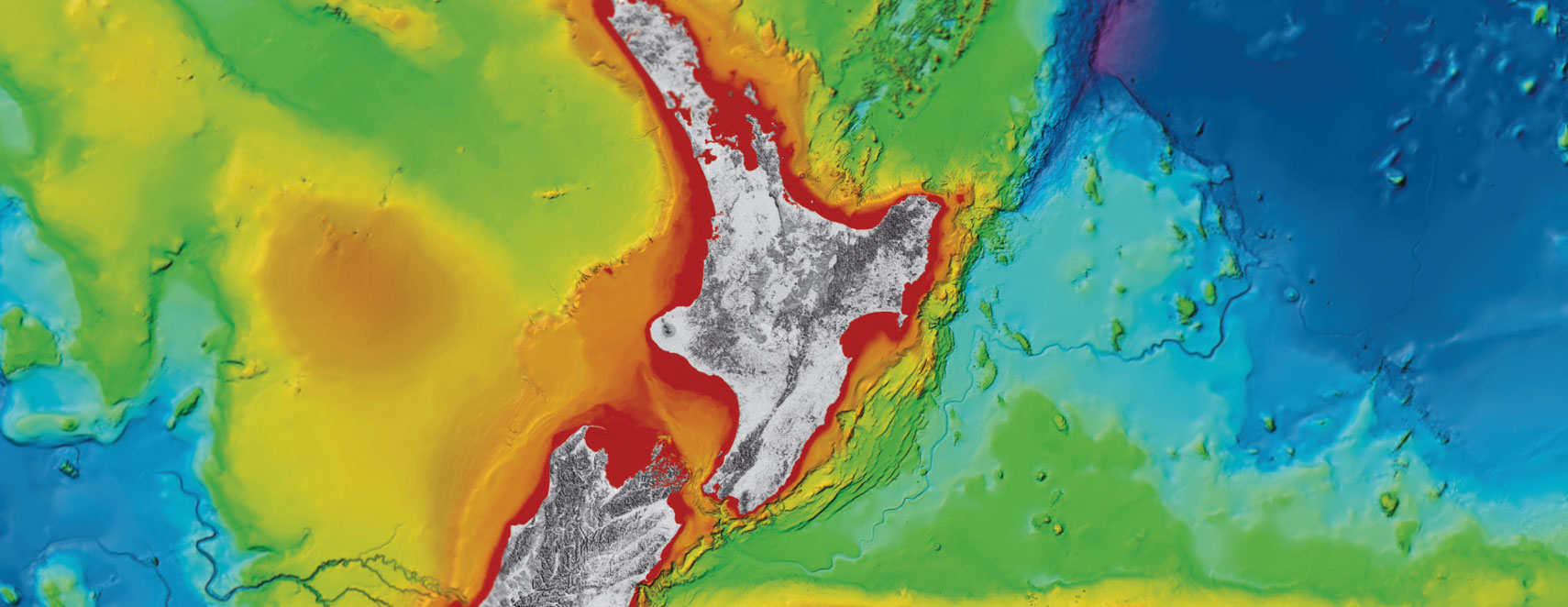
Revelle Blog #6 Seafloor sampling

Sarah Seabrook is a Graduate Student from Oregon State University and Dr. Claire McKinley is a Research Associate from the University of Washington. They are currently working and reporting on the research occurring along the Hikurangi subduction zone on board the US research vessel Revelle
A critical mission for this research project, is to get samples of sediment deep beneath the seafloor to track deep fluid flow through the Hikurangi subduction zone. Fluid conditions affect the likelihood and type of earthquakes that occur at faults.
This cruise applied to use the Oregon State University Marine sediment sampling facility to ensure we could collect the sediment we need. The Oregon State coring group specializes in deploying heavy duty coring equipment, they are also the nicest and most helpful group of people you will ever sail with.
There are two different kinds of heavy-duty coring that we are doing on this cruise, gravity coring and piston coring. I think of coring as driving a giant straw shaped cookie cutter into sediment.
As the name implies, we use gravity to sink the cookie cutter into the seafloor and collect sediment. The gravity core is connected to a winch to controls its 60 meters a minute descent to the ocean depths. The force at which a core hits the seafloor is controlled by the speed of the winch*. We can insert the corer around six meters into the sediment bringing up enough mud for our mission.
Sometimes, we need to bring up samples from deeper beneath the seafloor. This is when we use the piston corer. As the name implies instead of gravity, a piston drives the core into the seafloor.
Our piston core has a trigger core attached. The trigger core hits the seafloor first and triggers the piston core free fall into the sediment. In the time it takes the piston core to leave the trigger mechanism and hit the seafloor it has reached terminal velocity, the fastest speed it can go. Because the piston core allows the core to hit the seafloor with so much more force it can collect sediment samples up to 50 meters in length.
It is important for us to know what the seafloor looks like because coring on uneven ground can cause the core to fall over or get stuck so we use detective work to determine where to drop the cores (see Blog #4 mapping the ocean).
We also use a ‘sub-bottom profiler’ that the ship is fitted with to get an idea of how hard and soft the seafloor is. The coring technicians on board have experience in many different settings allowing them to decide which corer to use where.
On this cruise, we have already done over 70 gravity cores! This has led to thousands of different samples that will help us understand fluid flow deep underneath the seafloor along the Hikurangi subduction zone.
* The force at which a core hits the seafloor is controlled by mass times acceleration. When the mass is constant, which it is for these cores, then the only thing that can make it hit the seafloor faster is increasing the speed (acceleration) of the winch (Physics!). This means the speed the core hits is controlled by the maximum winch speed.
Disclaimers and Copyright
While every endeavour has been taken by the East Coast Lab Hikurangi Subduction Zone M9 to ensure that the information on this website is
accurate and up to date, East Coast Lab Hikurangi Subduction Zone M9 shall not be liable for any loss suffered through the use, directly or indirectly, of information on this website. Information contained has been assembled in good faith.
Some of the information available in this site is from the New Zealand Public domain and supplied by relevant
government agencies. East Coast Lab Hikurangi Subduction Zone M9 cannot accept any liability for its accuracy or content.
Portions of the information and material on this site, including data, pages, documents, online
graphics and images are protected by copyright, unless specifically notified to the contrary. Externally sourced
information or material is copyright to the respective provider.
© East Coast Lab Hikurangi Subduction Zone M9 - www.eastcoastlab.org.nz / +64 6 835 9200 / info@eastcoastlab.org.nz
